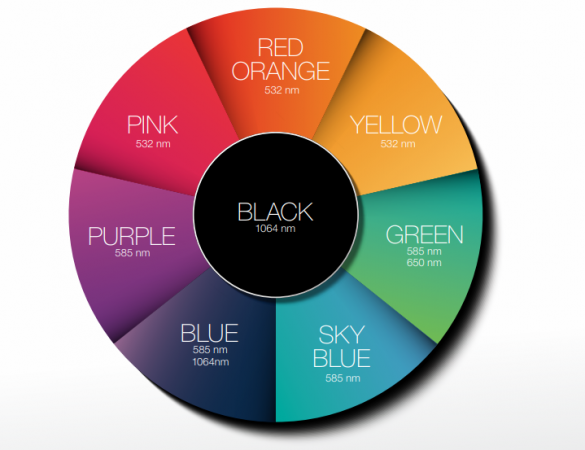If you’ve thought about offering laser tattoo removal in your clinic (which, considering 50% of tattoo owners have post-tattoo regret, we wouldn’t blame you for!) there are a few things to consider before settling on an appropriate device, aside from having to fit in with your existing laser treatments and device capabilities. Since not all devices are made the same, your selection may either broaden or restrict your scope of treatable tattoos.
Tattoo removal by q-switched lasers has been used effectively since the 90s. Emitting very short pulses of energy lasting just millionths of a second, tattoo ink is shattered into smaller particles that the body can disperse and remove on its own. These short pulses don’t produce much heat to surrounding areas either, minimising skin damage.
Unfortunately, not all tattoo pigment responds the same, and some devices are not able to destroy tattoos of certain colours. Specific wavelengths are attracted to specific colours, so it’s important to keep this in mind when selecting your device/s, as a number of wavelengths are required to remove the entire spectrum. Some lasers produce two different wavelengths; the combination is extremely effective in its use against acne scars, pigmentation, melasma and pigmented lesions, but is not perfectly suited for destroying green tattoo ink.
Some providers, like the Victorian Cosmetic Institute, house a number of devices with multiple wavelengths in order to treat the full spectrum of coloured tattoos (in addition to pigmentation, hair removal etc.) such as Medlite and Alma’s SINON Ruby. Depending on your clinic’s needs, desired treatment outcomes and available floor space, it may be a good option to look into a device with the highest number of varying wavelengths, such as LUMENIS PiQo 4 – able to treat the broadest range of pigment/tattoo colours, on the widest range of skin types using PiQo4’s four wavelengths –1064nm, 532nm, 650nm and 585nm. It also provides up to 10 times more energy for both 1064nm and 532nm (650mJ & 325mJ respectively) wavelengths, and can be set as either Nano or Pico, making them suitable for use with both, for dual pulse treatments.
Of course, you may simply need to fill a gap in your current laser device offerings, so to give you an idea of what you’ll need to treat even the most rainbow tattoos, here’s a quick breakdown of the most popular colours and respective required wavelengths for optimal performance/least number of treatments.

Black – the most common of tattoo ink colours
1064nm
Red – the second most common
532nm
Green – the third most common
650nm
Others – including blues, purples, pinks, oranges
585nm
For more news and updates, subscribe to our weekly newsletter.




